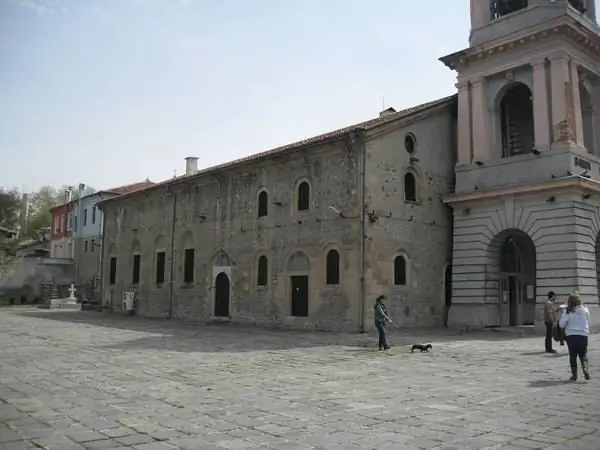
Description of the attraction
The Cathedral of the Nativity of the Virgin is an Orthodox church located in the old part of the city of Plovdiv. There is information that in the place where the temple stands today, about the 9th-10th centuries there was an old church. In 1189 it was plundered by the crusaders during the Third Crusade. Later, the building was restored, and a monastery was located nearby. Probably during the Ottoman invasion and conquest of the city in 1364, the holy monastery was destroyed.
In the Renaissance, not a trace remained of the ancient majestic church. In the period from 1844 to 1845, craftsmen from the city of Bratsigovo erected a new church in this place - the Cathedral of the Nativity of the Virgin. In the year of completion of construction, the church was consecrated.
The impressive domeless basilica with one apse was built entirely of stone. The length and width of the structure reaches 32 and 17 meters, respectively. The interior of the temple is divided into three naves by two rows of six columns. The columns are crowned with decorative baroque capitals and are connected to each other by stone arches. Due to the restrictions that existed during the years of Ottoman rule regarding the construction of Orthodox churches, the cathedral does not have a dome. In the western part there is a vestibule, and on the eastern side there is an altar.
The Empire style iconostasis belongs to the work of master carvers Dimitar and Anton Stanishev. It reaches 14.3 meters in length and 3.7 meters in width. Floral motifs can be traced in the carved elements that adorn the iconostasis: wreaths of oak branches, roses, daisies, daisies, grapes, leaves - everything is made of wood and painted gold. Under a row of royal icons in medallions there are images of saints and scenes from Holy Scripture, most of which were painted by N. Ondrinchanin. The icon "The Most Holy Theotokos with the Child Jesus" (1875) belongs to the brush of the famous Bulgarian painter Stanislav Dospevsky.
The bell tower, built in 1881 according to the project of Joseph Schnitter, is a three-story tower topped with a dome. Four bells were cast by Lazar Veleganov. Above the arched entrance to the bell tower, which serves as an adornment of the church, there is a grateful inscription "In memory of the liberators".






